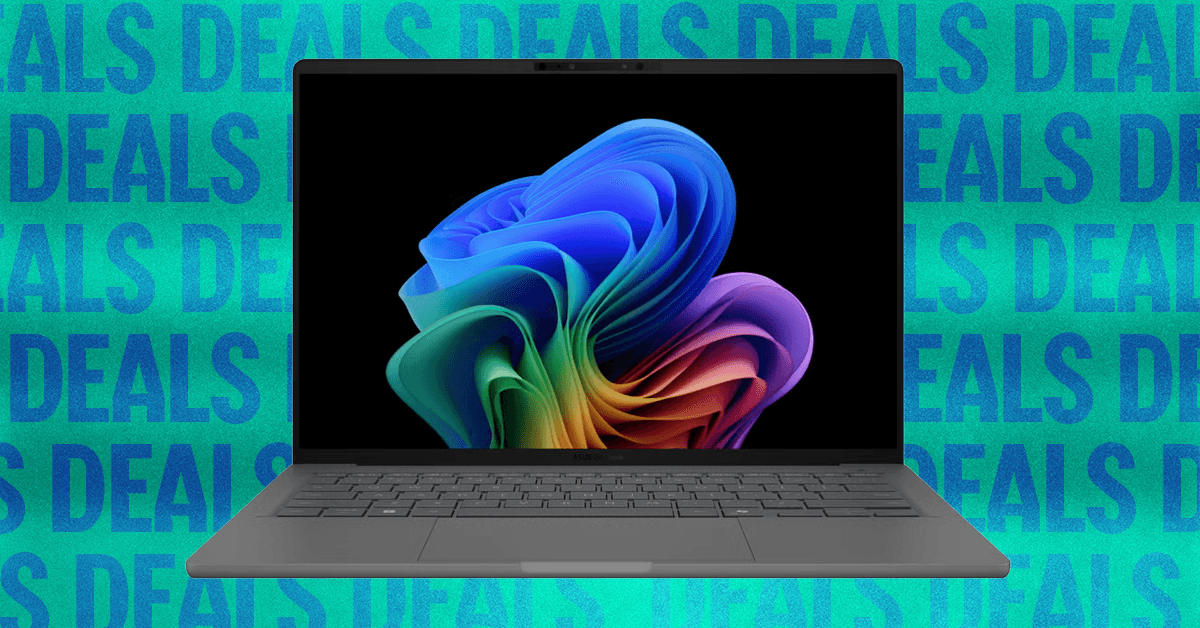Tech
Orange claims Euro first with satellite direct-to-device SMS service | Computer Weekly

Orange has announced the launch of the Message Satellite service, designed to allow customers based in mainland France to send and receive SMS messages as well as their geolocation via satellite when mobile or Wi-Fi coverage is unavailable.
Available from 11 December 2025 for the general public and during 2026 for professional and corporate customers, and on a partnership with non-terrestrial network operator (NTN) Skylo, the offer is available for Orange’s 5G and 5G+ customers, and will be initially proposed, on an exclusive basis, to those owning a Google Pixel 9 or 10 smartphone. Message Satellite will subsequently be extended in terms of services and compatible handsets.
The service is designed to consolidate what Orange claims is its leadership position in networks and in France by offering what it claims is “the most comprehensive and high-performance” range of connectivity services on the market. It is also said to illustrate Orange Group’s commitment to continuing its strategy of providing a complete portfolio of mobile, terrestrial, satellite and submarine connectivity offerings, displaying technological diversification capabilities.
The service is based on direct-to-device technology designed to allow a smartphone to communicate directly with a satellite. The process is described as simple: users connect to the satellite through a dedicated SMS interface allowing them to write their message. The satellite then takes over to ensure the sending and receiving of SMS messages via Orange’s core mobile network.
Orange believes the technology ensures reliable and straightforward SMS exchanges, perfectly suited for certain use cases or environments. These include outdoor adventurers and sports enthusiasts – staying connected with loved ones during treks, trail runs, and mountain and sea outings; those living or traveling in areas with no coverage in France or abroad; emergency services, logistics or transport operations; for teams operating in isolated or poorly covered areas or after natural disasters when terrestrial networks are disrupted; and tourism, for those traveling in mountainous, coastal or rural areas.
“Message Satellite’s offer addresses the fundamental need to stay connected with loved ones, even when away,” said Orange France CEO Jérôme Hénique. “With this new offer, Orange provides a useful and simple innovation that strengthens service continuity for our customers, wherever they are. Being the first operator in France to launch this option demonstrates our leadership and our ambition to provide high-quality connectivity everywhere and for everyone.”
Orange Wholesale CEO Michaël Trabbia said: “Orange combines the best available technologies to meet our customers’ connectivity needs. The Direct to Device technology is part of this approach, providing readily available and targeted connectivity on your smartphone even in the absence of mobile or Wi-Fi coverage. The launch of this technology in France to enable the sending and receiving of SMS messages is a major first step for the group, paving the way for an enrichment of services available to Orange customers as technological evolutions continue.”
The Message Satellite will be available as a free option for the first six months, then at a price of €5 a month. It is currently available for use in France and 36 countries to date.
The Skylo coverage area includes Germany, England, Austria, Belgium, Bulgaria, Croatia, Cyprus, Denmark, Spain (excluding Canary Islands), Estonia, Finland, mainland France (including Corsica) and Guyana, Guadeloupe, Martinique, Réunion, Mayotte, Saint Martin, Saint Barthélemy, Greece, Hungary, Ireland, Iceland, Italy, Latvia, Liechtenstein, Lithuania, Luxembourg, Norway, Netherlands, Poland, Portugal, Czech Republic, Romania, Slovakia, Slovenia, Sweden, Switzerland, USA, Canada, Brazil, Taiwan, Australia, and New Zealand.
Tech
This Lightweight Laptop Is Almost Half Off

On the hunt for a lightweight and budget-friendly laptop that won’t let you down? Best Buy has the Asus Zenbook A14 discounted from its usual $1,000 price point to just $550 for an early Black Friday deal. This featherweight laptop is a Windows Copilot+ PC, with a Qualcomm Snapdragon X Plus at its core, and is a great deal for students or occasionally putting in some hours from your local café.
Weighing in at just 2.1 pounds, this Zenbook is one of the lightest laptops we’ve tested to date, with most machines starting closer to 2.4, and only Lenovo’s Thinkpad X1 Carbon coming anywhere close at 2.2 pounds. That’s largely thanks to a material developed by Asus called Ceraluminum, a combination of ceramic and aluminum that’s both extremely light and very durable.
Like a lot of laptops in the Copilot+ range, the Zenbook sports an FHD+ (1920 x 1200) resolution screen, but it’s at least an OLED panel, which is great news for those of you who put your laptop on the coffee table to watch movies. Our reviewer Christopher Null ran a video playback test, and even with the screen at full brightness, the laptop managed to run for over 20 hours. That’s a truly impressive feat, particularly for a laptop so thin and light.
The heart of this machine is a Snapdragon X Plus from Qualcomm, a brand you might be more used to seeing in mobile phones than Windows machines. While it does help give you that awesome battery life, the performance leaves a bit to be desired. While it’s totally fine for web browsing, text documents, and email, don’t expect to play the latest games, or do anything more strenuous than some light graphics work.
Qualcomm chips are slowly becoming a more appealing option for laptops, and if you’re trying not to spend a ton of money on a laptop, they’re worth a look. While gamers and video editors should swing by our laptop roundup for more serious options, at just $550 the Zenbook A14 offers a surprising amount of value in a petite package.
Tech
Best Travel Pants for Women Who Go Places (2025)

Travel pants that are tough enough to handle hangry moods and unplanned delays.
Source link
Tech
5G Standalone growth spurs differentiated connectivity services | Computer Weekly

One of the key trends of 2025 has been the continued growth of 5G Standalone (5G SA) networks, and this growth has been confirmed by the November 2025 Ericsson mobility report (EMR), which found that deployments have triggered a notable 2025 growth in the number of communications service providers (CSPs) offering differentiated connectivity commercial models based on 5G SA network slicing.
The November 2025 EMR covers a new forecast timeframe, from 2025 through the end of 2031. EMR researchers identified 118 cases – across 56 CSPs – where network slicing is used to provide differentiated connectivity services. Out of these 118 cases, 65 have moved beyond proof of concept and into commercial services across 33 CSPs. These are either subscription services or add-on packages for consumer or enterprise customers. Twenty-one of the 65 commercial offerings – almost one third – were launched during 2025 alone.
In addition, the study found that more than 90 CSPs have now launched/soft-launched 5G Standalone (5G SA) networks – an increase of about 30 CSPs from the same period last year, and 20 from the June 2025 EMR report. It added that in 2025 alone, 5G subscriptions are expected to top 2.9 billion by the end of the year – equating to around one-third of all current mobile subscriptions – an increase of some 600 million subscriptions year on year.
In geographical coverage terms, 2025 saw an increase of 400 million people worldwide being able to access 5G. Around half of the global population beyond mainland China is expected to have 5G coverage by the end of 2025.
Mobile network data traffic grew 20% between the third quarter of 2024 and the corresponding period in 2025, which Ericsson said was a slightly larger-than-expected increase, driven by mainland China and India. Continued growth is forecast at an annual average of 16% through 2031. 5G networks are expected to manage 43% of all mobile data by the close of 2025, up from 34 % for the corresponding period last year. EMR experts forecast this to increase to 83% in 2031.
Looking at 5G use cases, the survey predicted enhanced mobile broadband to top 6.4 billion 5G subscriptions by the end of 2031, comprising around two-thirds of all mobile subscriptions at the time. Some 4.1 billion of these subscriptions – around 65% – are forecast to be 5G SA.
Fixed Wireless Access (FWA) broadband was also seen as continuing to grow as a 5G use case. The November 2025 EMR forecasts that around 1.4 billion people globally are expected to access FWA broadband by the end of 2031 – 90% via 5G. EMR researchers have identified 159 providers that currently offer FWA services via 5G – amounting to approximately 65% of all FWA service providers.
The survey also found that the number of service providers offering speed-based tariffs – a common monetisation model for fixed broadband via fibre or cable – increased from 43% to 54% since the November 2024 EMR.
Commenting on the research and its findings regarding 5G, EMR publisher and Ericsson CTO Erik Ekudden said: “We see that service providers around the world are keen to embrace and deploy 5G SA to offer differentiated connectivity based on value services and not just data volume packages. As reflected in the case studies in this EMR edition, 5G SA is already enabling differentiated connectivity opportunities. We’ve seen many service providers go from proof-of-concept to commercial deployment in 2025 alone, and we expect to see that trend continuing.”
The new reporting EMR period also covered the first expected deployments of commercial 6G. Based on previous mobile generation cycles’ subscriptions uptake, EMR researchers expect the first commercial launches to be driven by leading service providers in front-runner markets, such as the US Japan, South Korea, China, India and some Gulf Cooperation Council countries.
Global 6G subscriptions are forecast to reach 180 million by the end of 2031, not including the early uptake of AI-enabled internet of yhings devices. Ericsson believes that the subscription uptake number could increase significantly if 6G launches earlier than previous cycles indicate. Commercial 6G is expected to launch about a year later in Europe, compared with other countries, than was the case for 5G, primarily due comparably later deployments of 5G SA.
-

 Tech5 days ago
Tech5 days agoNew carbon capture method uses water and pressure to remove CO₂ from emissions at half current costs
-

 Politics7 days ago
Politics7 days agoBritish-Pakistani honoured for transforming UK halal meat industry
-

 Sports5 days ago
Sports5 days agoTexas A&M officer scolds South Carolina wide receiver after touchdown; department speaks out
-

 Business5 days ago
Business5 days agoThese 9 Common Money Mistakes Are Eating Your Income
-

 Sports6 days ago
Sports6 days agoApple scrapping MLS Season Pass service in ’26
-

 Business6 days ago
Business6 days agoWhat’s behind Rachel Reeves’s hokey cokey on income tax rises?
-

 Fashion6 days ago
Fashion6 days agoAfter London, Leeds and Newcastle, next stop Glasgow for busy Omnes
-

 Tech6 days ago
Tech6 days ago$25 Off Exclusive Blue Apron Coupon for November 2025






